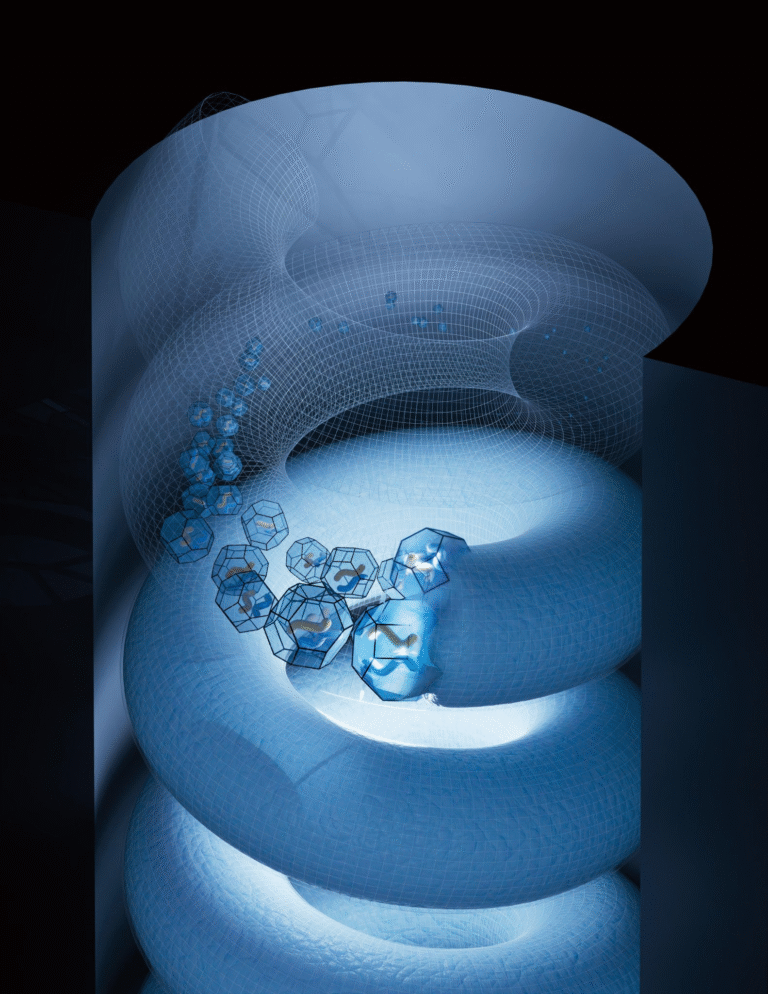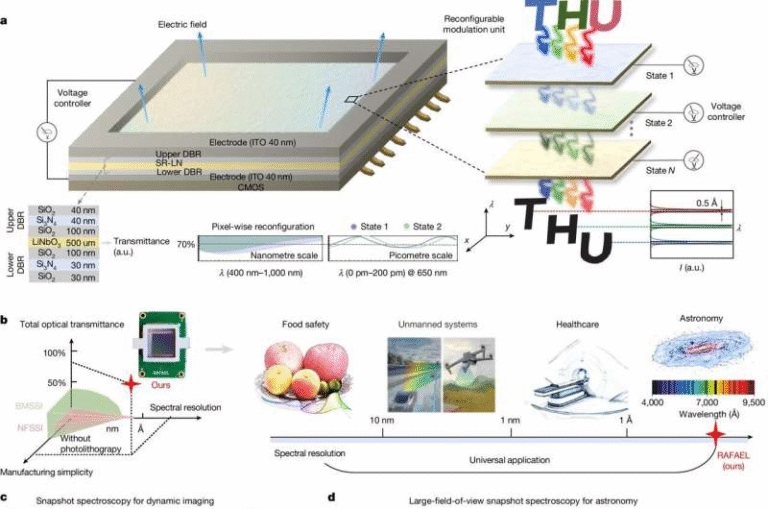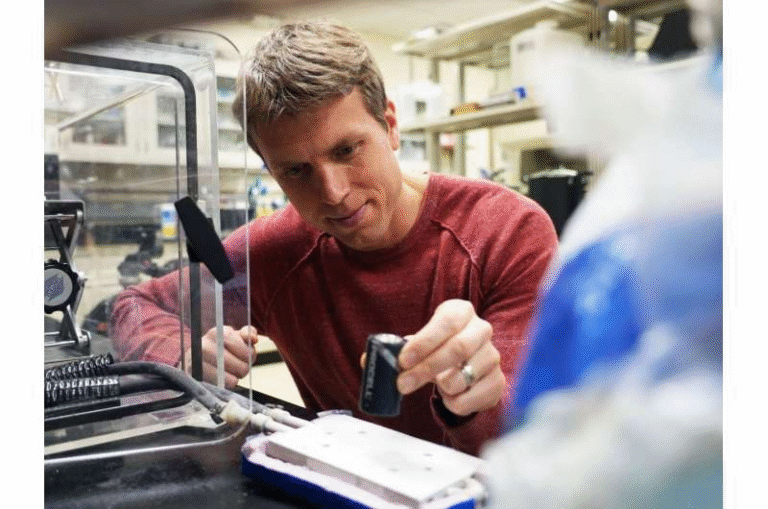Google’s New Quantum Algorithm Outruns the World’s Fastest Supercomputers

Google has once again made waves in the field of quantum computing, claiming a significant step toward practical quantum advantage — where a quantum computer performs a real-world task faster and more efficiently than any classical supercomputer can. The company’s Quantum AI team announced that their new algorithm, named Quantum Echoes, running on the Willow quantum processor, managed to perform a complex physics computation 13,000 times faster than the world’s most powerful supercomputers.
This marks a major milestone not just for Google, but for the broader scientific quest to move quantum computing from theory and laboratory experiments into real-world applications.
The Big Claim: Quantum Speed Beyond Classical Limits
The news comes from Google’s Quantum AI division, whose researchers recently published their findings in Nature under the paper titled “Observation of Constructive Interference at the Edge of Quantum Ergodicity.”
The team explains that their Willow processor, which contains 105 superconducting qubits, successfully executed the Quantum Echoes algorithm — a novel method for studying how information spreads and becomes chaotic in complex quantum systems.
What makes this achievement stand out is the nature of the problem tackled. Previous claims of quantum “supremacy” (like Google’s 2019 Sycamore experiment) focused on abstract or artificial computations — tasks designed solely to show quantum speedups, but with little real-world use. In contrast, Quantum Echoes was applied to a real physics problem, one that has direct relevance in areas like materials science, chemistry, and information theory.
According to Google, the task would have taken a classical supercomputer years to complete, while the Willow chip accomplished it in a few hours.
Understanding the Core of the Experiment: Out-of-Time-Order Correlators (OTOCs)
At the heart of this experiment is a fascinating concept called the Out-of-Time-Order Correlator, or OTOC.
In simple terms, OTOCs measure how information spreads and becomes scrambled in a quantum system. Imagine a pool of entangled particles that all influence one another instantaneously — if you change one particle, the effect ripples through the entire system. This process of “scrambling” information is extremely hard for classical computers to simulate because of the sheer complexity of the quantum interactions involved.
Google’s Quantum Echoes algorithm works by performing a time-reversal trick. It first allows the quantum system to evolve forward in time, introduces a tiny disturbance (a “nudge”), and then reverses the process. This back-and-forth evolution produces what researchers call a quantum echo — a signal that reveals how quickly and chaotically information has spread through the system.
The specific measurement used in Google’s experiment, known as OTOC(2), represents a second-order variant of the standard OTOC, which is even more computationally demanding. This choice was deliberate: OTOC(2) is highly sensitive to the fine details of quantum dynamics and notoriously difficult for classical machines to compute, making it an ideal candidate for testing quantum advantage.
The Hardware Behind the Breakthrough: The Willow Quantum Processor
The Willow processor is Google’s latest superconducting quantum chip. It follows the Sycamore processor from 2019 but features improved design and performance.
Key specifications include:
- 105 superconducting qubits
- Single-qubit gate fidelity: about 99.97%
- Two-qubit gate fidelity: around 99.88%
- Readout accuracy: approximately 99.5%
These are remarkable levels of precision for a system operating under extreme cryogenic conditions, where even the smallest amount of noise can disrupt quantum states.
The researchers also emphasize that this experiment was verifiable — meaning other quantum devices or experimental systems can, in principle, confirm the results. This sets it apart from earlier claims of “quantum supremacy,” which faced skepticism because the results couldn’t be easily checked.
Why “Quantum Echoes” Matters
So why is this experiment being called a milestone in quantum computing?
The answer lies in its combination of scientific relevance, speed, and verifiability. For years, quantum researchers have been searching for a task that not only demonstrates speedup but also contributes meaningful data to physics or chemistry. Quantum Echoes appears to achieve both.
In the experiment, the quantum chip simulated how fast information spreads in a complex, chaotic quantum system — a question that lies at the core of quantum statistical mechanics and thermalization. The 13,000× performance boost represents one of the first times a quantum processor has clearly outperformed the best classical systems on a task with scientific value.
Moreover, this isn’t just a one-off demonstration. It’s a proof-of-principle that similar algorithms could, in the near future, be applied to simulate molecular interactions, chemical reactions, or even materials under extreme conditions — problems that conventional supercomputers struggle with due to their exponential computational cost.
From “Quantum Supremacy” to “Verifiable Quantum Advantage”
Google’s 2019 experiment with the Sycamore chip introduced the term “quantum supremacy.” In that test, their device performed a random circuit sampling task in about 200 seconds — a task estimated to take the best supercomputers 10,000 years.
However, that claim was later challenged when improved classical algorithms drastically reduced the gap. Critics argued that while Sycamore’s performance was impressive, the task itself had little practical use.
This time, Google has deliberately avoided the term “supremacy” and instead used the phrase “verifiable quantum advantage.” The distinction is important: quantum advantage means that the quantum system performs better on a specific, useful task, and verifiable means the result can be independently checked.
It reflects a more mature stage of quantum computing — moving from flashy demonstrations to meaningful, testable science.
The Scale of the Achievement
According to the data provided, the Quantum Echoes experiment required millions of repetitions, accumulating what Google describes as over a trillion quantum echoes. This volume of measurement was necessary to extract clean results from the inherent noise of quantum computation.
In comparative benchmarks, classical simulations of the same system were estimated to take over three years of compute time on leading supercomputers, while the Willow processor finished in roughly two hours.
Such a speedup, if fully verified, would represent the first practical quantum advantage in history — not just a theoretical demonstration.
Expert Reactions and Caution
While the achievement is widely regarded as impressive, experts remain cautiously optimistic. Several physicists have pointed out that while this is a solid step forward, it still involves a specialized problem — one that doesn’t yet translate into everyday computational benefits.
Commentaries in Nature and The Guardian have noted that while the result is significant, the field still has to overcome challenges like error correction, scalability, and hardware stability before we can call quantum computing truly practical.
That said, the experiment’s verifiability and real-world relevance make it far harder to dismiss than previous claims. Even skeptical researchers agree that Google’s approach shows clear progress toward the long-sought goal of useful quantum computation.
Broader Implications of the Breakthrough
The implications of this result extend well beyond academic physics. Here’s what this means in broader terms:
1. New Avenues for Materials Science and Chemistry
Quantum computers like Willow are particularly suited to modeling quantum systems — atoms, molecules, and materials — that are themselves governed by quantum mechanics. Traditional computers struggle to simulate these systems accurately because the required resources grow exponentially with system size. A verified quantum advantage in this area could revolutionize drug discovery, battery research, and nanomaterial design.
2. Foundations for Quantum Verification
The verifiable aspect of the algorithm is just as important as its speed. It introduces methods that can cross-check quantum results experimentally, improving trust in quantum outcomes. This is vital as we approach the age of hybrid quantum-classical computing.
3. A Step Toward Fault-Tolerant Quantum Computing
While Willow is not yet a fault-tolerant quantum computer (that is, one capable of correcting its own errors), it’s another step toward that ultimate goal. Google’s roadmap includes building logical qubits and error-corrected architectures that could scale to thousands or millions of stable qubits.
4. Boosting Confidence in Quantum R&D
This demonstration also boosts confidence in industry investment and academic collaboration. As practical examples of quantum advantage emerge, we can expect increased funding and partnerships aimed at commercializing quantum computing.
A Quick Dive: What Makes Quantum Computing So Different?
To understand why Google’s result is exciting, it helps to grasp what makes quantum computing so special.
Traditional computers rely on bits — zeros and ones — that represent two discrete states. Quantum computers, on the other hand, use qubits, which can exist in a superposition of states, meaning they can represent both 0 and 1 simultaneously.
Even more powerful is entanglement, a phenomenon where qubits become correlated such that the state of one instantly influences the other, no matter the distance.
This allows quantum systems to process vast amounts of information in parallel, exploring many possible solutions at once. However, quantum systems are also extremely fragile — any interference from the environment can cause decoherence, collapsing these delicate states and destroying information.
That’s why high fidelity, precise error management, and verification (like in Quantum Echoes) are so essential.
What Comes Next?
Google’s Quantum AI team says this is only the beginning. They plan to refine the Quantum Echoes algorithm, explore more complex systems, and push toward higher qubit counts and lower error rates.
Meanwhile, other major players — such as IBM, IonQ, and Rigetti — are also pursuing different approaches, including trapped ions, photonic qubits, and hybrid architectures.
Whether Google’s result remains unchallenged will depend on how reproducible it is — and whether improved classical algorithms can narrow the gap again, as happened after 2019.
But for now, this represents one of the most convincing examples yet that quantum computers can outperform classical ones on meaningful problems.
Research Paper: Observation of Constructive Interference at the Edge of Quantum Ergodicity – Nature (2025)





